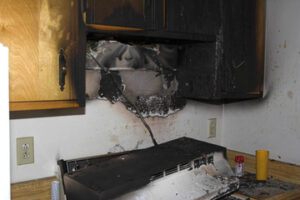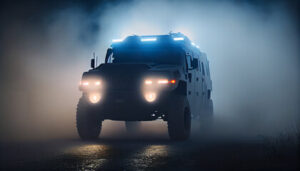Home » Articles posted by Amber Howard
Author Archives: Amber Howard
Fire Damage Claims – What You Need to Know
When it comes to fire damage, there are many concerns that need to be addressed. In addition to the physical charring and other visible damage, there is also smoke damage and corrosive residue.

To mitigate such problems, property owners should ventilate their homes and document all the damage for insurance claims purposes. In addition, restoration companies should carry out structural repairs and deodorization. Visit https://www.allproutah.com to learn more.
Fire damage assessments examine the level of destruction caused by a fire and how it relates to a building’s structural stability. The assessment includes the examination of a building’s foundation, framing, walls, and roof. A thorough inspection may also include checking for signs of water damage that can lead to harmful mold growth. The inspection is usually done by a professional who has the necessary training and experience to perform a fire damage assessment.
During the fire damage assessment, the engineer will determine how severe the damage is to each component of the structure and whether it can be repaired or replaced. The evaluation will also look at the impact on personal property, such as furniture or equipment. This is important for insurance claims because the damage could lead to costly replacements if not addressed quickly and effectively.
The fire damage assessment process involves the use of destructive and non-destructive testing, along with site clean-up to remove soot and other contaminants that might interfere with a thorough visual analysis of the components. Using the results of this analysis, the engineer can identify the most severe elements of damage and prioritize them for repair or replacement. The engineer will also be able to make recommendations for the restoration of the damaged areas.
The structural assessment will be based on the available structural drawings and architectural drawings, test results, actual site measurements, design outcome, material properties, etc. These results will be used to create a model of the damage. This model will then be updated to reflect the changes in physical parameters due to the occurrence of the fire event and other factors such as weather conditions, ageing, wear and tear, and other environmental effects. This updating of the model allows us to accurately estimate and predict the behavior and response of the structural components. This will help in making the correct restoration decision and minimizing business interruption. The assessment will then be used for the preparation of a detailed report, which will be provided to the insured. The report will also include recommendations for restoring the structural integrity of the damaged areas, and for improving safety and longevity.
Insurance Claims
Fire damage can wreak havoc on the lives of property owners, destroying cherished possessions and leaving behind a devastating financial burden. As such, fire damage insurance coverage is essential for preserving the security and stability of both residential and commercial properties in the event of an unexpected disaster. However, successfully navigating the complex process of filing and settling an insurance claim can be challenging. Fortunately, understanding the key elements of the process can help property owners avoid common errors that often lead to reduced settlements and denials.
After taking steps to document the damage and find temporary living arrangements, property owners should contact their insurance provider as soon as possible. Most policies require prompt notification, and significant delays could disqualify a policyholder from being eligible to file a claim.
The insurance company will send an adjuster to the property to inspect and appraise the damages. This is an important step in the claim process because it determines how much the property will be compensated for, as well as whether it will be repaired or replaced. In order to get the maximum payout possible, property owners must ensure that they have thoroughly documented the extent of their losses and are fully prepared to answer any questions the adjuster may have.
If you’re unsure how to go about assessing your property’s damage, consider seeking out the assistance of an experienced Texas insurance claims lawyer. The right attorney will have the skills and knowledge to properly assess your property’s damage and provide accurate appraisals. They will also know how to effectively negotiate with insurers to secure a fair and comprehensive settlement.
Disputes over the interpretation of insurance policy language and coverage limits can frequently arise, particularly in the case of fire damage. Insurers can sometimes overvalue or underestimate the value of property, which is why it’s crucial that property owners keep a detailed record of additional expenses and receipts. This can be especially useful if an insurance provider denies a fire damage claim that you believe is unfair. The right lawyer can help you file an appeal with the insurance company and fight to reverse the denial, if necessary.
Smoke Removal
A major part of fire damage restoration is smoke removal. This step involves removing all traces of soot and odor from the house, including walls and floors. It also means going through the contents of the home to see what can be salvaged and what should be thrown away. This can be one of the most emotional parts of fire repair, but it’s necessary to prevent further damage to property and ensure safety.
Certain items, such as food that has been exposed to smoke or medicine that has been warped by heat from the flames, must be thrown out. This is because they can pose a health risk and are unsafe to eat or use. It’s also a good idea to throw out anything that is tainted with smoke or odor. It’s important to remember that smoke has a tendency to travel through areas of the home not directly affected by fire damage, so it’s best to be safe rather than sorry and get rid of everything.
The first step of cleaning smoke damage is vacuuming up all loose soot. This can be done with a specialized smoke cleaner, but a standard vacuum will work just as well. You should wear personal protective equipment when doing this, such as a mask and goggles. Soot is dangerous to breathe in, and it can also cause a variety of health issues, including some forms of cancer.
It’s also a good idea to wipe down all surfaces with a damp cloth or sponge. This is especially important for walls, as soot can cause discoloration and etching in wallpaper and paint. For this reason, it’s best to leave the wall cleaning to professionals who can do it safely and effectively.
The next step is determining the type of smoke damage and odor. The most common is dry smoke, which comes from burning paper and wood. This is usually less severe than wet smoke, but it still causes a lot of damage to objects. It’s difficult to remove from hard surfaces, but it’s easier to remove from fabrics and soft furniture. It can also cause permanent damage to drywall. This type of smoke can be removed with professional ozone treatment or thermal fogging, but it’s important to call in professionals quickly so that the odor doesn’t spread.
Cleaning
After the fire department clears your property and it is safe to return, there is a lot to do. The cleanup process is extensive and includes removing any water damage, cleaning soot, resolving odors, restoring and repairing damaged contents, irradiating contaminates from smoke damage and ensuring that the area is dry and clean for safety.
Fire and smoke damage leave behind soot that can stain and discolor surfaces, making them difficult to clean and causing permanent damage over time. Acidic soot burrows into fabrics, corrodes metals and deteriorates paints. It is also harmful to human health and may cause a variety of respiratory irritations, including coughing, wheezing, eye irritation and rashes. Soot also produces polycyclic aromatic hydrocarbons, which are known to mutate genes and cause birth defects in babies.
The type of fire and the materials that were burned will determine what kinds of residues are left behind. Class A fires burn common, everyday items such as paper, wood, fabric and building materials. This kind of fire damage leaves a powdery, dusty residue that is relatively easy to clean. Class B fires burn flammable liquids such as gasoline, oil or paints and leave a slippery, oily residue that is much more difficult to clean.
Smoke and soot can cling to everything in your building, even if it didn’t come close enough to burn or be exposed to flames. This type of residue can stain, corrode and discolor furniture, carpets and other textiles. It can also taint ceilings, walls and other structural elements. It is important to identify all the different types of damage to your building and its contents so that restoration professionals can make informed decisions about what can be salvaged, cleaned and sanitized.
Before beginning the cleaning process, you should take comprehensive photos of all the fire and smoke damage to help document and communicate it to your insurance company and restoration experts. This will help expedite the insurance claim and restoration process. In addition, you should carefully evaluate the condition of all belongings to determine what can be saved and what needs to be replaced.
